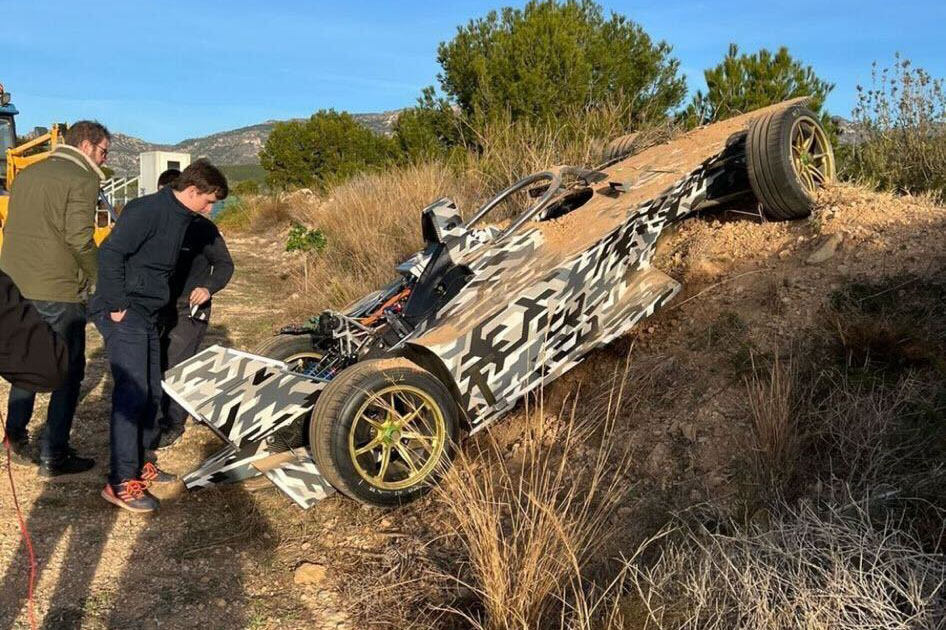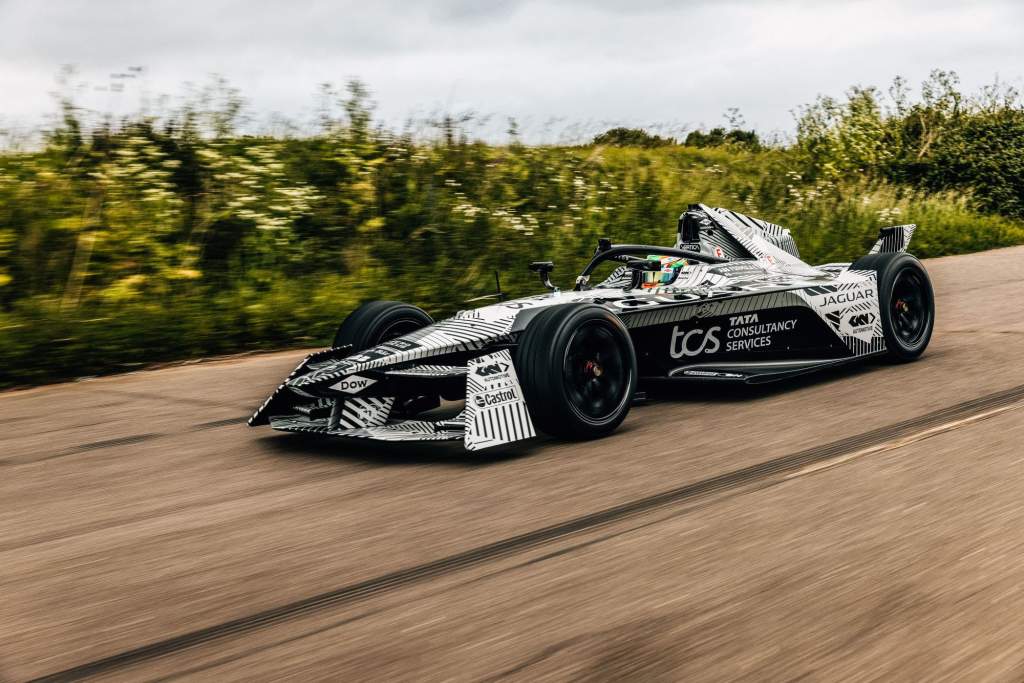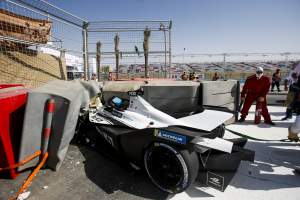Jaguar driver Sam Bird emerged unhurt from a huge Formula E testing accident at the Calafat circuit in Spain last week in the latest round of Gen3 running.
Bird left the circuit after a suspected but as yet unspecified problem with the development Jaguar, which was badly damaged in the shunt.
Details of the accident are scant as Jaguar was testing alone at the circuit, which is one of the most popular for Formula E teams because of its multiple configurations that simulate some aspects of the tight street circuits raced on by the series.
However, it is known that Bird was the only car on the track at the time and that he was unable to stop his car from the impact which occurred on Thursday October 13.
The Race understands that Bird had to be extricated from the car by the circuit safety unit, who were also joined by his own Jaguar team to get him out of the cockpit.
The test was Bird’s first time in the Gen3 Jaguar as he has been recuperating from the hand injury he sustained in the London round, which also ruled him out of the Seoul season finale.
In a supplied statement to The Race, Jaguar stated that “the team is now conducting a thorough review of the cause of the accident and until the facts are established no further comment can be made”.
Bird’s incident is at least the third serious accident to occur with the Gen3 car since it began testing just under a year ago, although the incidents don’t appear to be fundamentally linked by one issue.

The Race revealed in August that Theo Pourchaire suffered a dramatic looking incident also at Calafat earlier this year and ended some way off the circuit in an accident that the FIA described as “a consequence of the loss of the communication between the car and the battery”.
In the same statement it was detailed that since Pourchaire’s shunt “a redundancy line has been implemented and the measure has proved its effectiveness”.
The FIA also made clear that manufacturers’ test packs “have all been integrating software and hardware updates and they have been successfully shown to function as intended during ongoing development testing”.
In July Oliver Rowland was left bruised after an accident at Mallory Park which he attributed to a problem with the Mahindra powertrain rather than any spec component element of his test and development Gen3 car.
The Gen3 car features an additional 100kW of power meaning that speeds of close to 200mph can be reached. Additionally, the cars feature a front powertrain which is used for regeneration and not traction purposes.
This has added complexity in initial engineering practices for manufacturers, including in understanding how it works in relation to the car’s braking characteristics.
With no rear mechanical brakes at all teams are going through processes of building control systems around the front powertrain. This is set to be a key element in teams and drivers finding competitive advantages in Gen3 racing.
Within this will be how the hydraulic element (brake-by-wire) is utilised in relation to the regenerative braking via the front of the car through mapping to help the driver shape the braking more for application on entry and therefore optimisation into corners.

These processes are likely to be a key feature of manufacturers’ testing which will continue right up to the end of the official pre-season promoters’ test at Valencia in mid-December.
As stated by Jaguar it as as yet unclear what caused Bird’s accident last week but accidents that have involved braking episodes have occurred in Formula E before.
Daniel Abt was left bruised and briefly hospitalised after an accident at Mexico City in February 2020, while Edoardo Mortara suffered ligament damage in his back after a braking issue at Diriyah in 2021.
The Jaguar accident came at a crucial time in the test and development phase as powertrains and cars are set to be homologated by the FIA next month.
Teams were already facing a major race against time to get their cars ready for the new season which will kick off at Mexico City in mid-January 2023 before it is expected that a quick succession of races in Riyadh (double-header), Hyderabad and Cape Town will all take place before the end of February.
Some disruption has already been endured by manufacturers as a problem with the cells in the spec Williams Advanced Engineering provided RESS has curtailed some tests.
The Race understands that a possible solution to this issue has been recently bench tested by WAE.






